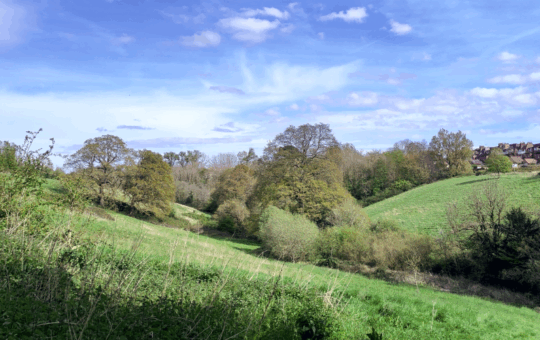
Improving Nature Connectivity Through Valley Conservation at the University of Exeter
The University of Exeter has recently initiated an innovative conservation project in the Lower Hoopern Valley, aimed at improving biodiversity and flood resilience by restoring natural water flow and habitat connectivity. This endeavor underscores the university’s commitment to advancing nature conservation and sustainable water management practices in the UK.
Partnering with the Environment Agency and researchers from the Centre for Resilience in Environment, Water and Waste (CREWW), the project focuses on implementing Nature-Based Solutions (NBS) to address challenges such as surface water runoff, habitat fragmentation, and pollution. These efforts contribute not only to local ecological health but also to broader climate adaptation strategies, making them highly relevant for communities and policymakers alike.
How the Conservation Work Boosts Biodiversity and Flood Management
The Lower Hoopern Valley project involves several targeted interventions designed to restore ecological connectivity and improve flood resilience. Key measures include the installation of “leaky wood spreaders,” which function as dam-like structures that regulate water flow. These structures feature gaps that allow fish and invertebrates to pass freely, supporting freshwater biodiversity.
In addition to the leaky dams, contractors will create temporary pools within the stream to slow down water flow during periods of high rainfall. These pools help reduce surface water runoff, lessen the risk of downstream flooding, and create wet grassland habitats that serve as critical breeding and feeding grounds for various species.
An important aspect of this work involves removing artificial barriers and overdeepened banks, a consequence of historical fast-flows during storms. Restoring these natural features encourages sediment transport and promotes the development of diverse aquatic and terrestrial habitats, which are vital for wildlife conservation.
Enhancing Habitat Connectivity for Freshwater Biodiversity
Connectivity is a cornerstone for resilient ecosystems. By improving passageways for aquatic species and invertebrates, the project aims to foster healthier biodiversity within the river corridor. The removal of trees affected by ash dieback and the strategic felling of lower-value sycamores allow space for the installation of the flood management structures, ensuring minimal disturbance to the ecological integrity of the site.
This holistic approach benefits multiple species by increasing habitat complexity and facilitating natural migration and breeding pathways. It also supports the broader landscape connectivity necessary for ecological resilience in the face of climate change.
Benefits for Local Communities and Sustainability
The Valley conservation project delivers tangible benefits to local communities, particularly in flood-prone areas. By slowing runoff and promoting natural water retention, it reduces the likelihood of severe flooding events, protecting homes, infrastructure, and local economies.
Furthermore, the wet grasslands and restored stream habitats contribute to recreation, educational opportunities, and community engagement, fostering a greater appreciation for nature conservation initiatives. These efforts exemplify sustainable land and water management aligned with the UK’s environmental policies and commitments under international biodiversity agreements.
Role of Universities in Promoting Environmentally Sensitive Solutions
The University of Exeter’s active involvement demonstrates how academic institutions can lead the way in pioneering conservation strategies. Through research, practical implementation, and collaboration with government agencies, universities can provide evidence-based solutions that are both effective and sustainable.
This project also serves as an excellent case study for students and researchers interested in ecology, environmental management, and climate adaptation. It highlights the importance of integrating scientific research with practical conservation measures to deliver measurable environmental outcomes.
How to Support and Get Involved
While the ongoing work is critical, community support remains vital. Passersby and residents in the area are encouraged to follow safety instructions during construction, such as using alternative routes if necessary and obeying safety signs. Moreover, raising awareness about the importance of freshwater ecosystems and habitat connectivity can foster greater public engagement in conservation efforts.
If you are interested in the broader impact of such projects or exploring similar initiatives, consider connecting with organizations involved in environmental conservation or pursuing educational programs at the University of Exeter focused on ecology and sustainability. Participating in local volunteer activities, or supporting policies that prioritize ecological resilience, can also contribute to national and global environmental goals.
Conclusion
The Valley conservation project at the University of Exeter exemplifies a forward-thinking approach to managing water security and biodiversity. By combining innovative engineering with ecological principles, it provides a model for sustainable flood management and habitat restoration. As climate challenges intensify, such nature-based solutions become increasingly essential for building resilient ecosystems and communities.
To learn more about environmental research and conservation programs at the University of Exeter, visit their CREWW Center or explore their comprehensive academic offerings. Taking the next step towards understanding and supporting nature conservation can make a tangible difference in securing our shared future.

